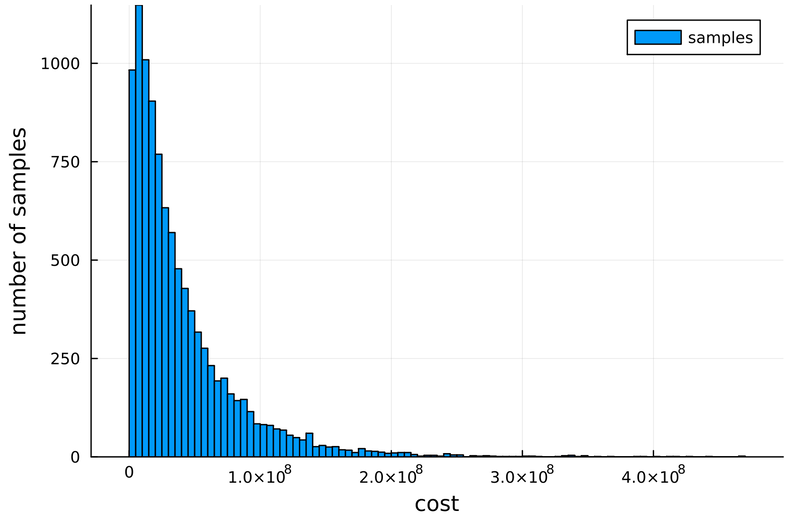
author: niplav, created: 2024-01-30, modified: 2024-01-30, language: english, status: draft, importance: 5, confidence: certain
I collect civilizational inadequacies and perform an inadequacy analysis on some of them.
$\frac{1 \text{ warning}}{\text{person} \cdot \text{day}} \cdot \frac{2 \text{ unskilled labor seconds}}{\text{warning}} \cdot \frac{1 \text{ unskilled labor hour}}{3600 \text{ unskilled labor seconds}} \cdot \frac{365 \text{ days}}{\text{year}} \cdot 4 \text{ years} \cdot 4 \cdot 10^8 \text{ persons} \approx 3.25 \cdot 10^8 \text{ unskilled labor hours}$$\frac{5€}{\text{unskilled labor hour}}$ is ~1.6 bio. €$\frac{5 \text{ unskilled labour hours}}{\text{person}} \cdot 3 \cdot 10^8 \text{ persons}=1.5 \cdot 10^8 \text{ unskilled labour hours}$$\frac{5€}{\text{unskilled labor hour}}$ this is ~7.5 bio. €Ceramic/porcelain plates and cups made of glass break easily, while the æsthetics we have around them seem mostly path-dependent (and perhaps even caused by their fragility, leftovers from a time where fragile tableware signaled wealth).
Cooling: Generally, porcelain plates have the advantage
that food placed on them cools less quickly. Wikipedia states
that
porcelain has a thermal conductivity of ~1.4 to 1.9
$\frac{W}{K \cdot m}$ at ~400 Kelvin, and pyrex
glass variants have thermal
conductivities of 1-2 in the the range 273-373 Kelvin, while Aluminium
(a contender for a substance out of which to make plates, glasses &
cups) has a thermal conductivity of ~100 $\frac{W}{K \cdot m}$ at
273 Kelvin — which leads to faster cooling, and colder food is less
enjoyable to eat. However, we don't have to be stupid about this:
plastics lose heat even more slowly than porcelain (generally with
thermal conductivities <1).
Æsthetics: The other advantage of porcelain and glass is that they just look so much nicer. I don't have any strong rejoinders here, my æsthetics rejoice in knowing that I'm doing a thing that is more economical—but I acknowledge that I'm in the minority there. The only guidepost I can offer is to look at the price and then ask: "Are the æsthetics worth this price?" If yes, go ahead! If not, I may have pointed out something interesting.
Code for a slightly more complicated Fermi estimate, (mis)using the probabilistic programming language Turing.jl:
using Turing, Plots
@model function ceramic_glass()
people ~ Normal(8*10^9, 0.05)
meals_per_day ~ truncated(Normal(2.5, 1), lower=0)
proportion_tableware_users ~ Beta(5, 2.5) # Mean ⅔
breakage_per_meal ~ Beta(1.5, 1000) # Mean ~0.0015
cost_per_tableware ~ truncated(Normal(2, 0.5), lower=0) # In dollars
end
chains = sample(ceramic_glass(), IS(), 10000)
sampled=get(chains, [:people, :meals_per_day, :proportion_tableware_users, :breakage_per_meal, :cost_per_tableware])
total_cost_per_day=sampled[:people] .* sampled[:meals_per_day] .* sampled[:proportion_tableware_users] .* sampled[:breakage_per_meal] .* sampled[:cost_per_tableware]
mean(total_cost_per_day)
4.00195809996674e7
gui(histogram(total_cost_per_day, label="samples", xlabel="cost", ylabel="number of samples"))

I'm aware that this code is ugly, and I'll fix it.
Note that this code only estimates the costs of fragile tableware, and makes no statements about the costs of e.g. switching to alternative materials.
I use the term "civilizational adequacy" in a very strict sense here: Areas where our world surprisingly overperforms, implementing policies or having institutions that, given one were to observe them, would indicate our civiliation being adequate in many other dimensions too. "Mundane" but still impressive infrastructure doesn't count, even though it's really good.